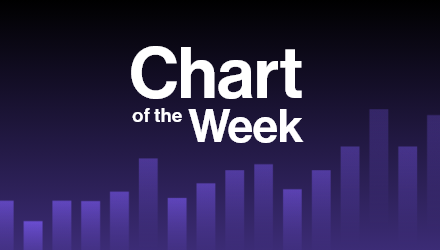While it has been months since the latest regional bank failure, many advisors remain concerned. They fear that the issues that caused runs on Signature Bank and Silicon Valley Bank have not receded. More importantly, they think it will mean overhang for financials as a sector in general. This article will examine some ETFs that hold financials.
During a late May VettaFi webcast with ProShares, we asked advisors an important question: “Approximately how long do you expect headwinds for banks and/or the financial sector to continue?” Nearly two thirds (66%) answered, “through the rest of the year or longer,” while 3.6% believe that headwinds will be over in a month. The challenge for ETF-minded advisors is that financial stocks are ubiquitous. Look inside a diversified ETF, and what you find might surprise you.
Advisors Have Concerns About Financials

Financials Widely Held in Popular Broad Market ETFs
The SPDR S&P 500 ETF (SPY) recently had 13% of assets in financials, per VettaFi’s LOGICLY data, making it the third-largest sector behind healthcare and information technology. While many people think of mega-caps like Berkshire Hathaway, JPMorgan, and Wells Fargo when considering the sector, there is actually more exposure in small-cap strategies. The iShares Russell 2000 ETF (IWM) had 15% of assets invested in lesser-known financial companies like Kinsale Capital Group, Selective Insurance Group, and Southstate.
See more: “ETF 360: Simeon Hyman on Sidestepping the Financial Sector”
The sector tends to be overweighted in value ETFs like the Vanguard Value ETF (VTV). VTV recently had 20% of assets in the sector, with Berkshire Hathaway in the largest overall position. However, financials can be found inside growth ETFs too. The Vanguard Growth ETF (VUG) has a 6.6% stake in the sector with MasterCard, S&P Global, and Visa among the biggest. Per the GICS framework, Mastercard and Visa became financial stocks after this year’s sector shakeup.
Financials Pay Steady Dividends
Investors should also expect to find financials as key parts of widely held dividend ETFs. For example, the Schwab US Dividend ETF (SCHD) had a 14% stake, with BlackRock and Blackstone the heftiest holdings. Even the ProShares S&P 500 Dividend Aristocrats (NOBL), which requires companies to have raised dividends for 25 years, has double-digit exposure. Given the numerous challenges that have gone on in the past 25 years, a 10% stake that includes Cincinnati Financial and Franklin Resources is notable.
NASDAQ 100 Index Investing Is Not Avoiding Financials
I can hear some of you shouting at me to mention the Invesco QQQ Trust (QQQ) or its sibling the Invesco Nasdaq 100 ETF (QQQM), which charges a lower expense ratio. QQQ and QQQM have reputations for investing in the 100 largest “non-financial companies listed on the Nasdaq Stock Market based on market capitalization.”
Many people refer to these ETFs as information technology funds. However, the ETFs also own consumer staples, healthcare, and communications services and consumer discretionary companies like Alphabet and Amazon.com. They also hold a combined 1% stake in Fiserv and PayPal Holdings, which became reclassified in the GICS structure as financials earlier this year, along with MasterCard and Visa.
I realize that not all ETFs are constructed based on GICS, but this is how many advisors and those providing research support think about the indexing world.
My point is not to tell you to avoid investing in financial stocks through ETFs, or even to focus on the banks that might be exposed to the same issues that suffered earlier in 2023. Rather, I aim to hopefully help the many advisors that expect headwinds for banks and/or the financial sector to continue to understand what this means. Looking inside an ETF remains important for all advisors.
For more news, information, and analysis, visit the ETF Education Channel.








